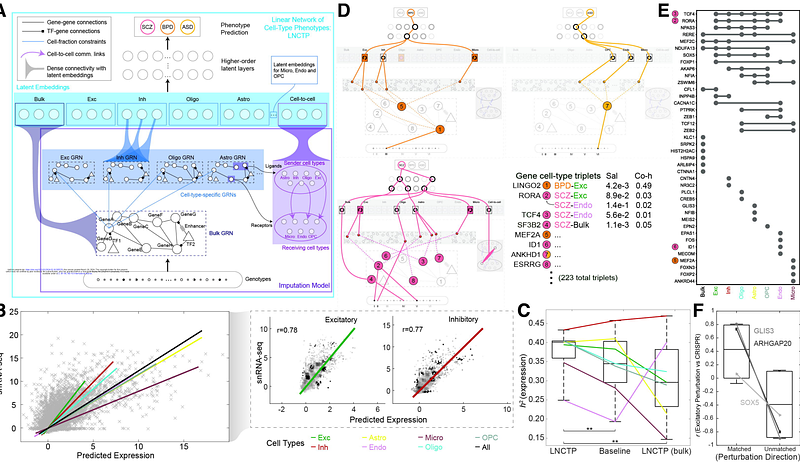Single-cell genomics and regulatory networks for 388 human brains

Single-cell genomics and regulatory networks for 388 human brains
Emani, P. S.; Liu, J. J.; Clarke, D.; Jensen, M.; Warrell, J.; Gupta, C.; Meng, R.; Lee, C. Y.; Xu, S.; Dursun, C.; Lou, S.; Chen, Y.; Chu, Z.; Galeev, T.; Hwang, A.; Li, Y.; Ni, P.; Zhou, X.; PsychENCODE Consortium, ; Bakken, T. E.; Bendl, J.; Bicks, L.; Chatterjee, T.; Cheng, L.; Cheng, Y.; Dai, Y.; Duan, Z.; Flaherty, M.; Fullard, J. F.; Gancz, M.; Garrido-Martin, D.; Gaynor-Gillett, S.; Grundman, J.; Hawken, N.; Henry, E.; Hoffman, G. E.; Huang, A.; Jiang, Y.; Jin, T.; Jorstad, N. L.; Kawaguchi, R.; Khullar, S.; Liu, J.; Liu, J.; Liu, S.; Ma, S.; Margolis, M.; Mazariegos, S.; Moore, J.; M
AbstractSingle-cell genomics is a powerful tool for studying heterogeneous tissues such as the brain. Yet, little is understood about how genetic variants influence cell-level gene expression. Addressing this, we uniformly processed single-nuclei, multi-omics datasets into a resource comprising >2.8M nuclei from the prefrontal cortex across 388 individuals. For 28 cell types, we assessed population-level variation in expression and chromatin across gene families and drug targets. We identified >550K cell-type-specific regulatory elements and >1.4M single-cell expression-quantitative-trait loci, which we used to build cell-type regulatory and cell-to-cell communication networks. These networks manifest cellular changes in aging and neuropsychiatric disorders. We further constructed an integrative model accurately imputing single-cell expression and simulating perturbations; the model prioritized ~250 disease-risk genes and drug targets with associated cell types.